My husband and I frequently visit a cabin in the mountains near Bailey, Colorado, at an elevation of 9,000 feet. Bailey is an outdoor adventurer’s dream – a peaceful mountain town located just outside Denver. The restaurants and shops provide everything you need before heading out on your next adventure! Close by, you can enjoy hiking along the beautiful trails in Pike National Forest, Mount Evans Wilderness and Lost Creek Wilderness, or cool down by dipping your toes in the Platte River.

Because of the high altitude, summer daytime high temperatures up here are cooler than in the Denver metro area by about 12 degrees. Since Denver had record-breaking temperatures this past summer, we enjoyed the highs in the 80’s instead of 90’s and 100’s.
Now, in early October, the high temperatures up here are still unseasonably warm, in the 60’s to low 70’s, with brilliant blue skies and not a cloud in sight. We’ve had a couple of mornings with ice on the bird bath, but mostly the low temperatures have been just above freezing. While these unseasonably warm temperatures and blue skies are wonderful for hiking and being outside in general, the downside is that the fire danger is very high.
PLANT LIFE IN THE FALL
In the fall weekends, there are so many people from the Denver area “leaf peeping” at the golden leaves of Aspen trees that there are traffic jams in the most popular spots! The Aspen trees (Populus tremuloides), pictured here on Kenosha Pass on September 25, have been spectacular this year due to the wet spring, and the late onset of cold fall temperatures. When crowds can be avoided, it’s very peaceful, with the smell of dry leaves in the fresh air and the breeze through the leaves making a quiet rustling.
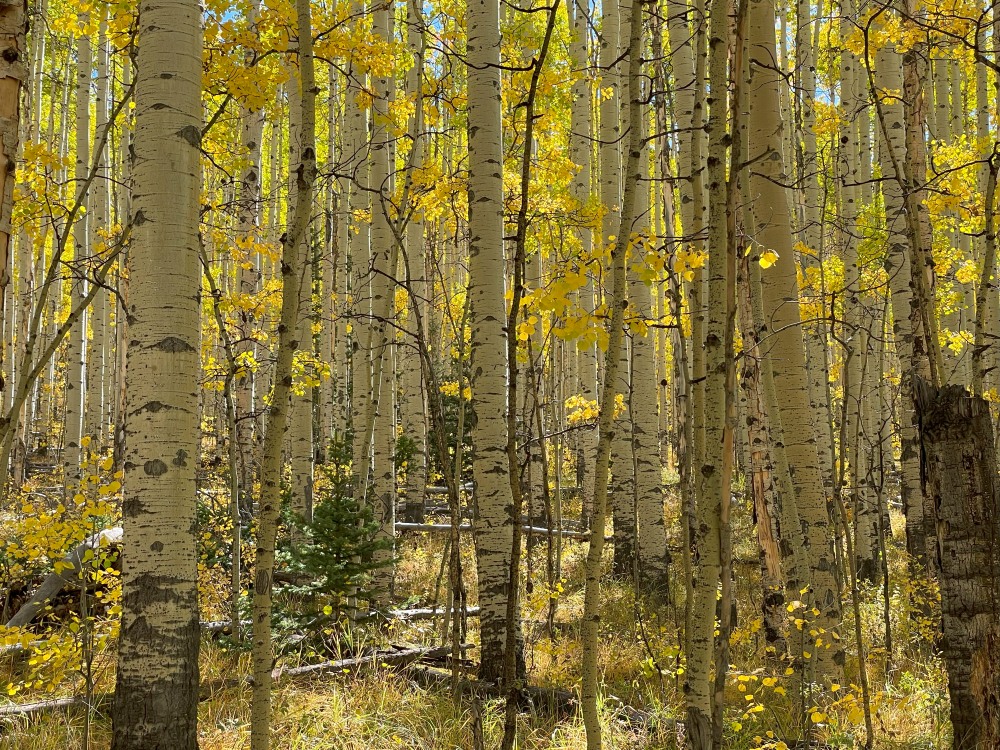
Even with the warmth, the Aspen at high altitudes are starting to lose their leaves, triggered by the lessening amount of daylight. This photo is from Mount Blue Sky Wilderness on October 5th, just a week and a half later! This meadow had patches of grass flattened, looking like it might be used as a bedding ground for deer and elk.
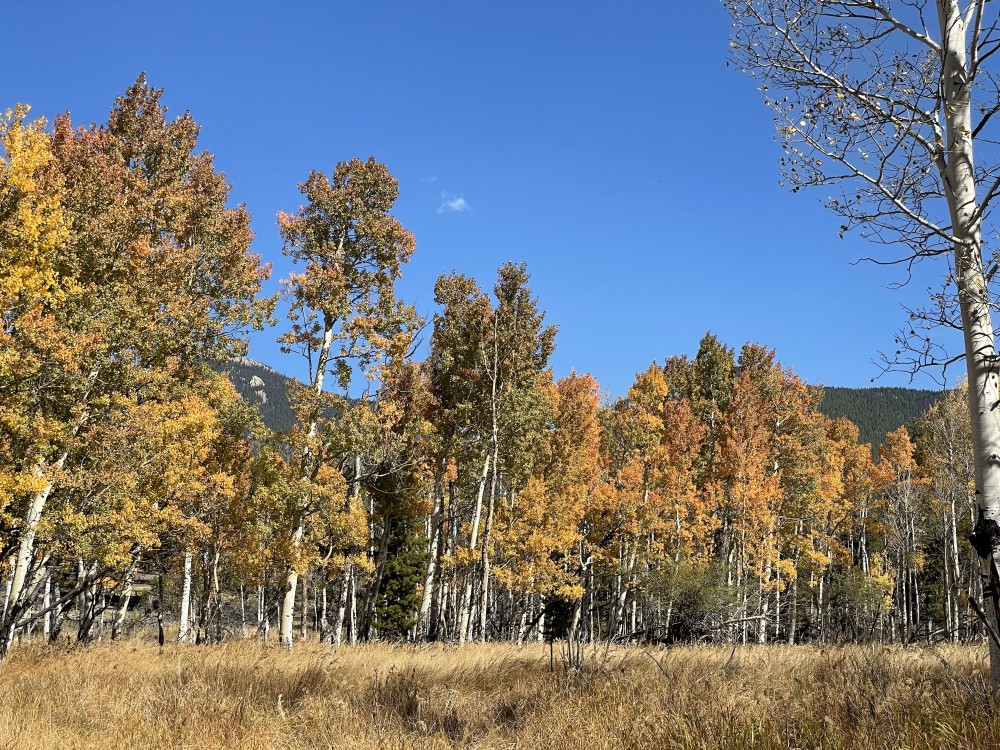
While there are still many blooming flowers in the Denver area in early October, wildflowers up here at 9,000 feet are few and far between. On that October 5th hike, we saw a few purple asters (aka Tweedy’s fleabane, Erigeron tweedyi), and an unusually late-blooming spray of cut leaf daisy (Erigeron compositus).
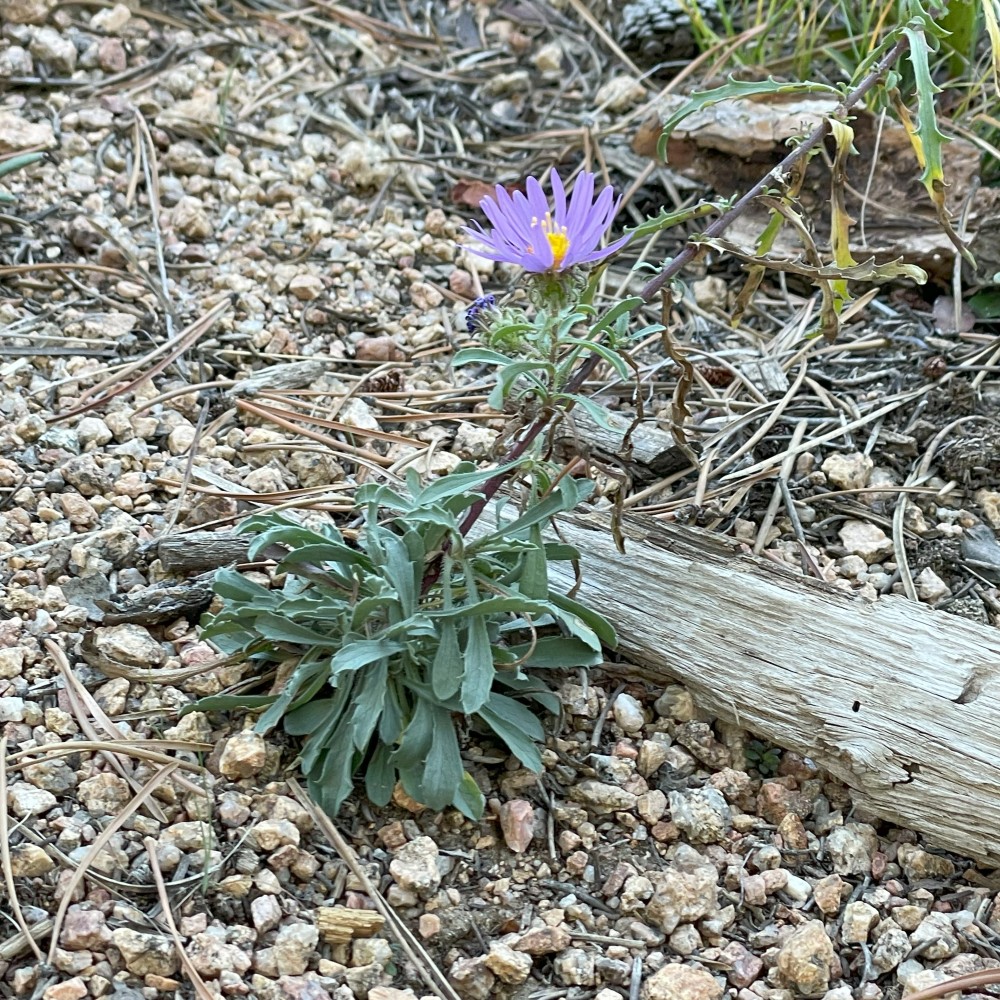

The many green patches of Kinnikinnick (Arctostaphylos uva-ursi), also known as Bearberry brighten up the granite along the path. Most still have some red berries that haven’t been eaten by bears or other animals. The thick, leathery leaves will stay green throughout the winter.
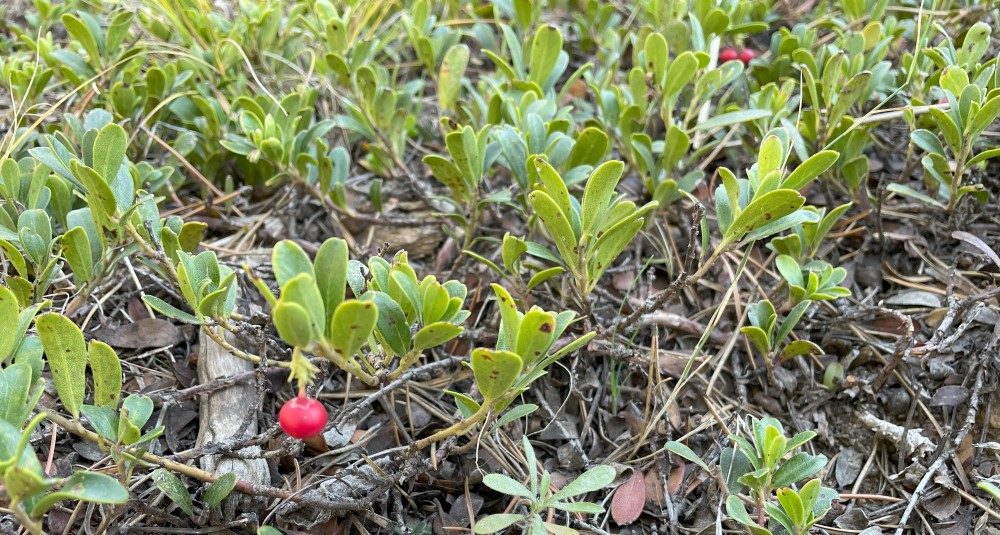
BIRD LIFE IN THE FALL
We have many bird feeders, though sometimes they inadvertently turn into squirrel feeders. Birds that we see frequently include bright blue Steller’s Jays, Mountain Chickadees, Pygmy and White-breasted Nuthatches, Dark-eyed Juncos, Crows, Magpies and Evening Grosbeaks.
This fall we have new visitors – Clark’s Nutcrackers. These are handsome gray birds with black on their wings and white on their tails, larger than the Steller’s Jays. We can hear them coming, with their loud harsh call. With their size and bullying attitude, they scare away the other birds, and then empty our feeders by picking out the seeds they want, throwing the rest to the ground. They can empty a bird feeder in a morning! While they eat some of the seeds, they also store dozens of seeds in a pouch under their tongue, later moving them to a cache for food in the winter.
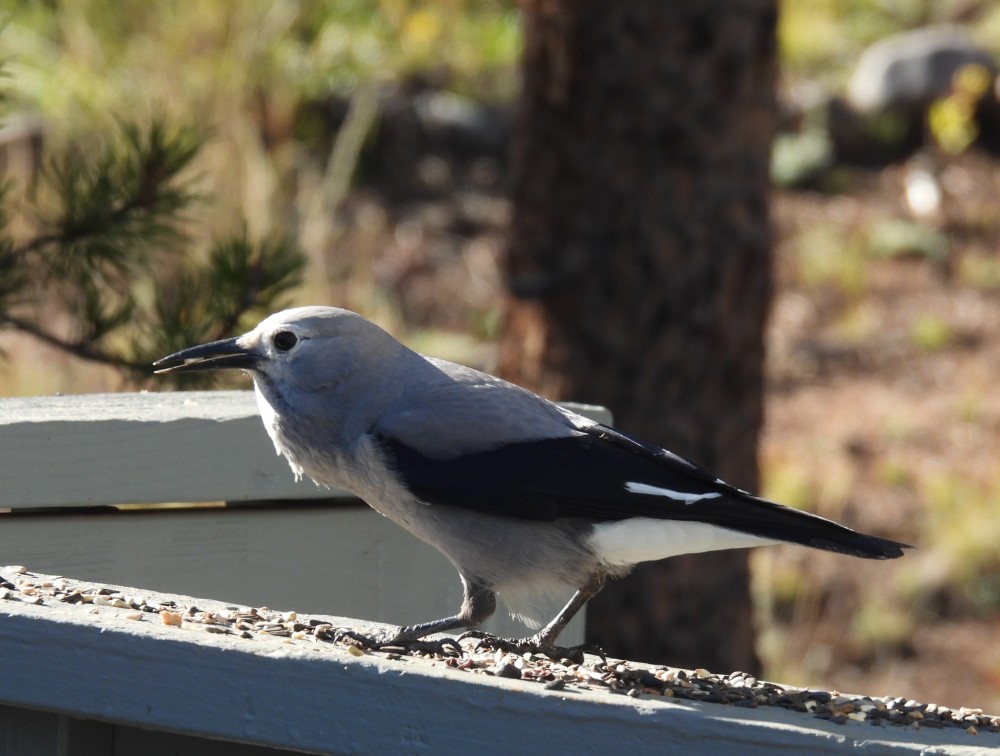
We modified a squirrel-proof birdfeeder to try to stop them from emptying out the birdfeeders, and they were smart and persistent enough to find a way in, so we have subsequently enlarged the outer wires on the birdfeeder so that some birdseed remains for small birds, which can fit inside the wires to be able to eat the seed.
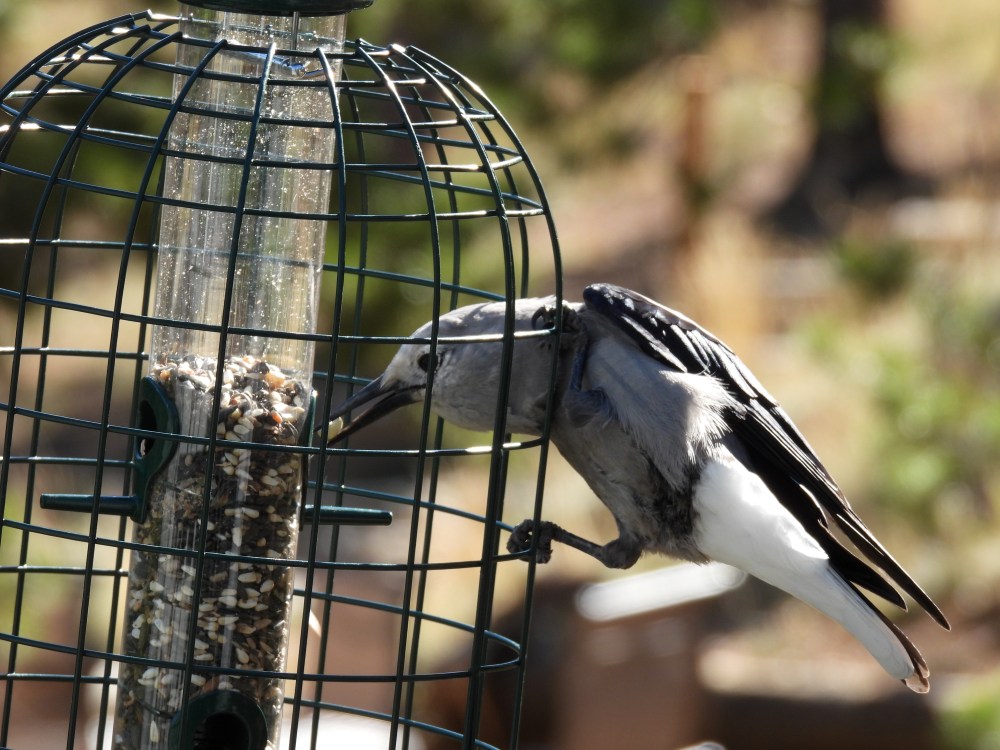
Here are some Pygmy Nuthatches enjoying the feeder without having to fend off the Clark’s Nutcracker.
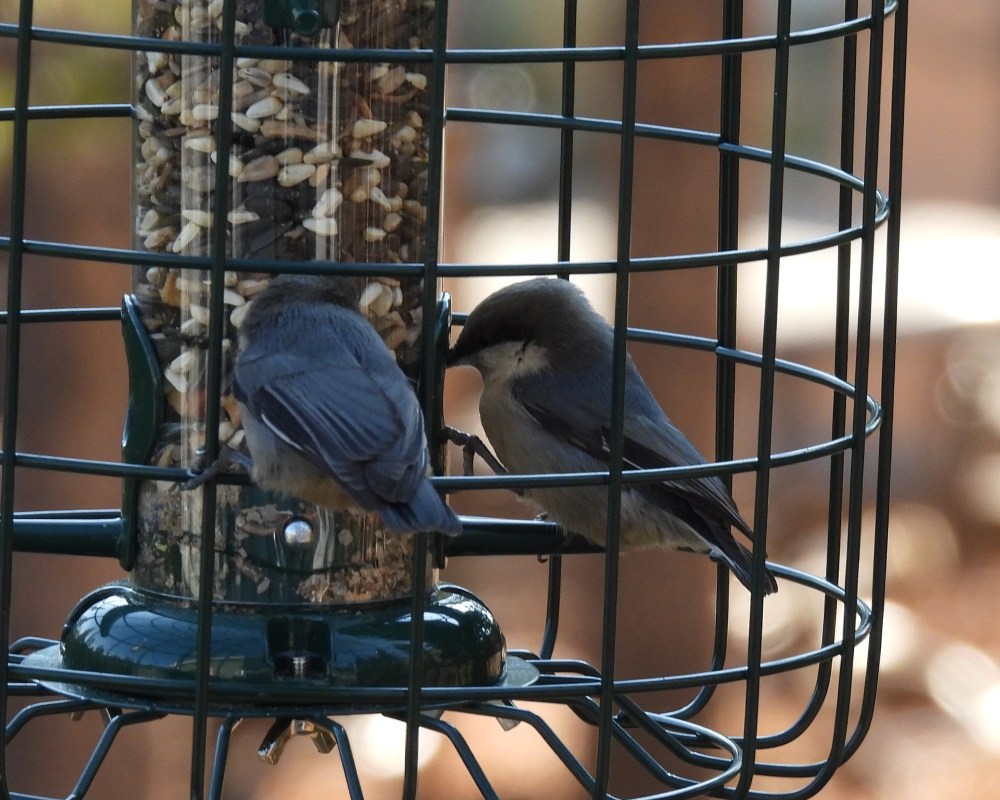
The Steller’s Jays, which prefer feeding on the ground, hopping as they go, have enjoyed the bounty that the Clark’s Nutcrackers have tossed on the ground for them.
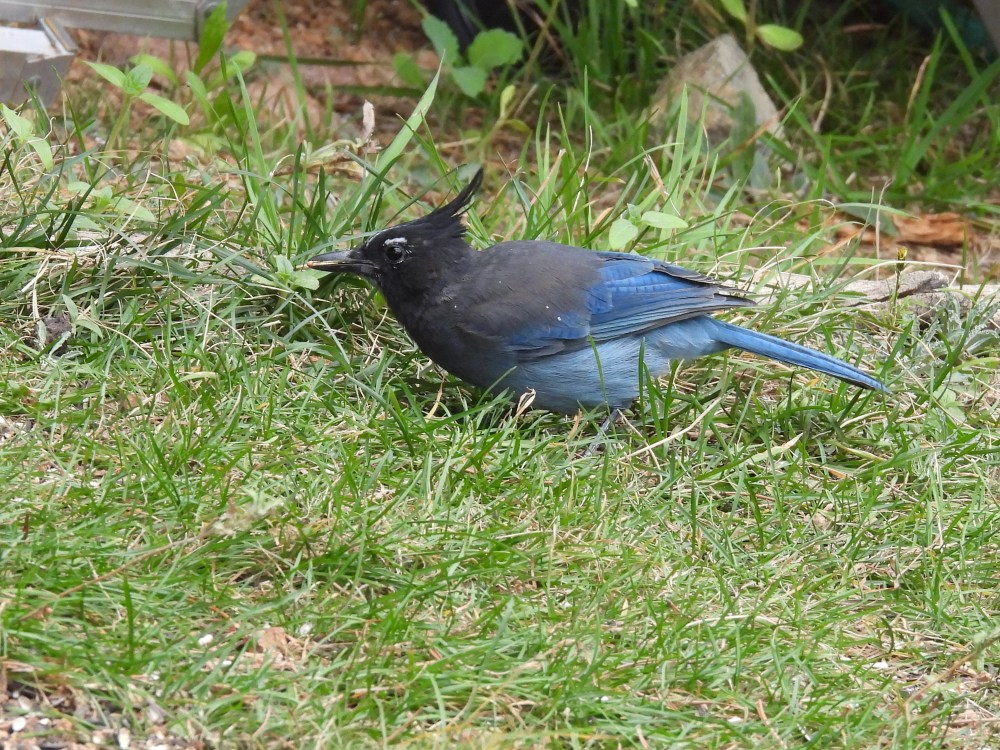
ANIMAL LIFE IN THE FALL
Animals are all around us up here, showing signs of getting ready for winter. We frequently see deer starting to get their warm winter coats, squirrels and chipmunks storing caches of seeds and, all too often, hear raccoons on the patio checking to see if we forgot to bring in the birdfeeders at night. There are also bears up here, though we haven’t seen them this summer or fall. Surprisingly, we have also seen a couple of moose in our neighborhood, feasting on the remaining aspen leaves. Although they were remarkably quiet, they were not very camouflaged.
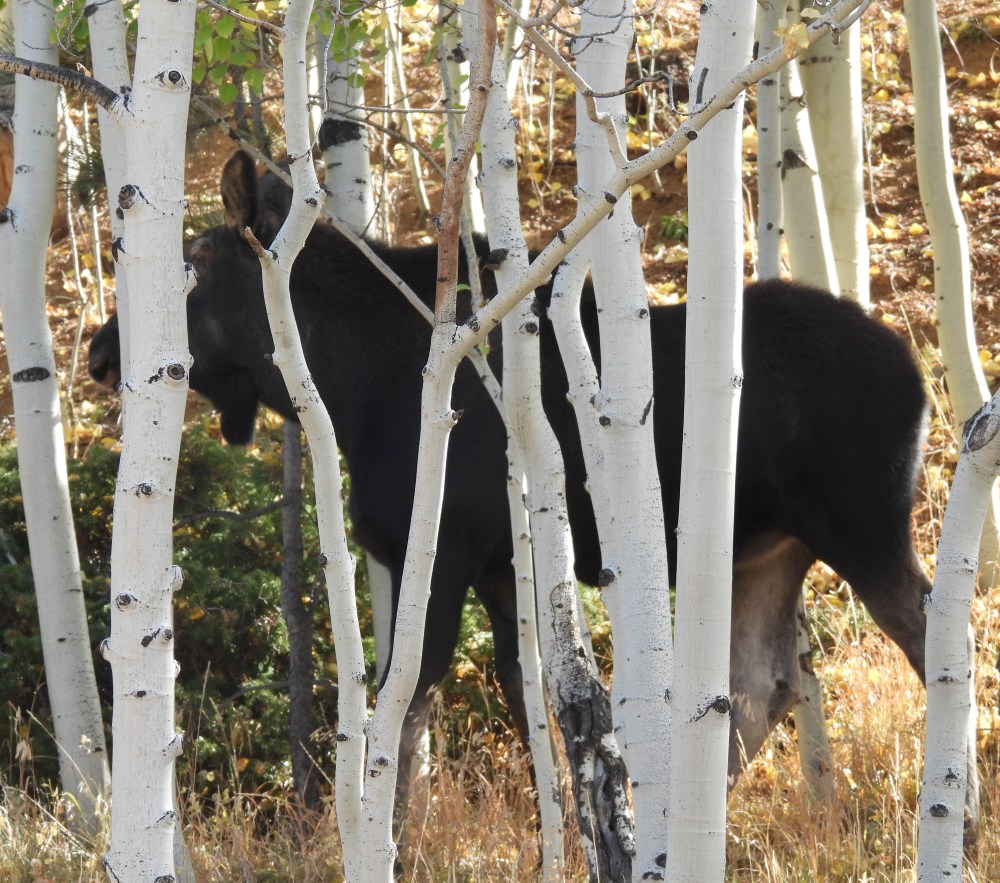
It has been a lovely fall up here at 9,000 feet! I’m interested to see what changes the coming colder weather will bring.


